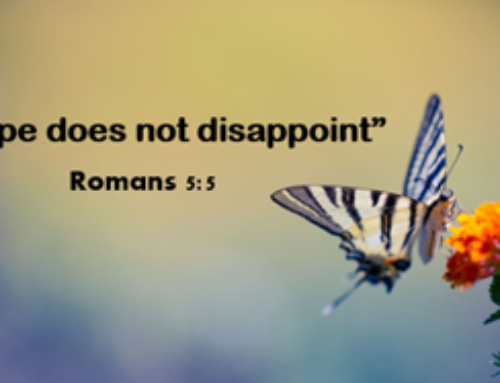by Anne Mulqueen, OFS
National Formation Commission

(This article originally appeared in the TAU-USA Fall 2023 Issue #110)
Today, in Franciscan circles, specific words or phrases are used to describe the Franciscan understanding of Christ and Christ’s relationship to humanity and creation. Too often, no clear definition is given, and many Franciscan teachings are skipped over without understanding what is meant.
This should not discourage us because St. Francis’ understanding of the Almighty deepened throughout his life. The man who began by repairing churches was not the same man who wrote the Canticle of the Creatures and gave himself back to God in the arms of Sister Death. So, Let us begin…
Franciscan Emphasis on the Blessed Trinity
The Trinity appears nowhere in the title of this article, but we must understand Franciscan Trinitarian spirituality to understand how our founder experienced God through each person of the Blessed Trinity. Also, he understood each person of the Trinity as relating to each other. In The Praises of God, written by Francis to Brother Leo, he writes:
You are three and one, the Lord God of gods; You are good, all good, the highest good, Lord God living and true.[1]
Further, he writes in his Earlier Rule, Chapter XXIII:
Let all of us truly and humbly believe, hold in our heart and love, honor, adore, serve, praise and bless, glorify and exalt, magnify and give thanks to the Most High and Supreme Eternal God Trinity and Unity Father, Son and Holy Spirit, Creator of all. Savior of all who believe and hope in Him, and love Him.
Now that we have established that St. Francis’ approach to the Godhead was Trinitarian let us turn to his love and devotion to the humanity of Christ.
Christ as Center (Christocentric)
Before theologians began to develop the concept of Christ as the center of all creation, St. Francis understood that all things spiritual and corporal were created through the Son[2].
The late Fr. Eric Doyle, OFM, an English theologian, wrote on why Christocentrism is important for us to understand. Fr. Eric wrote:
Francis reminds us all to realize the dignity God has bestowed on us: our body he formed and created in the image of his Son, our soul he made in his own likeness (Admonition V). The body of the Incarnate Word, Jesus of Nazareth, was the blueprint for the bodies of the first human beings…
For all their simplicity and clarity, [the sentence] of Francis just quoted, has a rich theological content.
Contained in embryo is the Christocentric vision of the Franciscan school and even the doctrine of Christ’s absolute primacy as formulated and expounded by John Duns Scotus[3].
Christocentrism naturally leads us to an understanding of the Primacy of Christ.
Primacy of Christ
The best way to understand the Primacy of Christ is through Scripture, particularly the Gospel of John and Colossians 1:15-20.
John’s Gospel begins by telling us that the Word, Jesus, was with God from the very beginning, and the Word was, in fact. God. Everything that exists came through Jesus; without Him, nothing would exist.
Through Jesus, we have life and a light that overcomes and dispels darkness. (Paraphrase of John’s Prologue). In Colossians, St. Paul and Timothy address the church in Colossae. To emphasize that Jesus is the fullness of God. Paul emphasizes the primacy of Christ in these key verses. He is the image of the invisible God, the firstborn over all creation… the head of the body, the church… the firstborn from the dead, that in all things He may have the preeminence. (Colossians 1:15, 18).
Christ as Exemplar
Often, in Franciscan sources, you will see Christ defined by the word Exemplar. St. Bonaventure 13.5. Consider Admonition V, wherein Francis writes, … how excellent the Lord made you, for he created and formed you in the image of his beloved son according to the body and to his likeness according to the spirit. Christ is the original, the exemplar, and we are the expression of the original artwork of God.
HAECCEIATAS
Haecceitas is a Latin word that translates into English as thisness. In Franciscan theology, the term was used by Blessed John Duns Scotus to express the unique and never-to-be-repeated quality of all creation. In the words of the song, There’ll Never Be Another You, nor will anything created be replicated. Haecceitas relates to the sacredness of each person and each thing. This concept is essential for all to understand because from it comes our belief in the dignity of each human person and the value of all God’s creation.
Franciscan Lectio Divina
When most prayerful people think of Lectio Divina, they imagine the traditional contemplative way of praying that involves four movements: reading Scripture, meditating on Scripture, entering into prayer, and then contemplatively resting in God’s presence.
Franciscans have another method that goes beyond contemplation into conversion and action. In her letter to Agnes of Prague, St. Clare of Assisi designed a new approach to prayer. Instead of divine reading, Clare offered sacred seeing. Using the crucifix as her image, Clare asked Agnes to gaze upon Christ with the eyes of the heart. Using her mind and imagination, Clare instructed Agnes to consider her thoughts while gazing. The next step Clare suggested was to contemplate Christ by being present to him in silence and allowing the inspiration of the Holy Spirit to emerge. The final step, imitation, is the one that transforms us into the one we love and empowers us to continue Christ’s mission.
Conclusion
The words and phrases used in this article are skeletal; covering them in depth would require writing a book. Also, many more terms need to be defined. The bad news is I had to pick and choose. Fortunately, there is good news. We have many Franciscan books in circulation that go deeply into these topics. I exhort you (using one of St. Francis’ favorite terms) to further research our rich Franciscan history and theology.
One book I highly recommend is The Franciscan Moral Vision: Responding to God’s Love, edited by Thomas A. Nairn. It can be purchased from the Franciscan Institute or Amazon.
Questions:
- How have you experienced Christ as being central in your life?
- If Christ is the blueprint for the image of God and the one through whom all that exists is created, what is your relationship with all of creation?
- How do you enhance the survival and thriving of humanity and the rest of God’s creation?
[1] Francis of Assisi: The Saint, p. 109
[2] Rule of 1221
[3] St. Francis of Assisi and the Christocentric Character of Franciscan Life and Doctrine, Franciscan Christology p 7.




Thank you. What a blessing.
Thank you for this reflection going into the season of Lent – unity and building up the Church thryencounter and dialogue even with enemies begins to spread the Peace of the Prince of Peace, Jesus of Nazareth, persistently and courageously!
Amen and have a blessed Lent in righteousness, peace and joy in the Holy Spirit, we can agree on many things especially the dignity and respect for the weakest of our society, the unborn, from conception to natural death with no exceptions. He came to give us life, life everlasting!1 Jn 4:4
Pax et Bonum,
Carol Asher